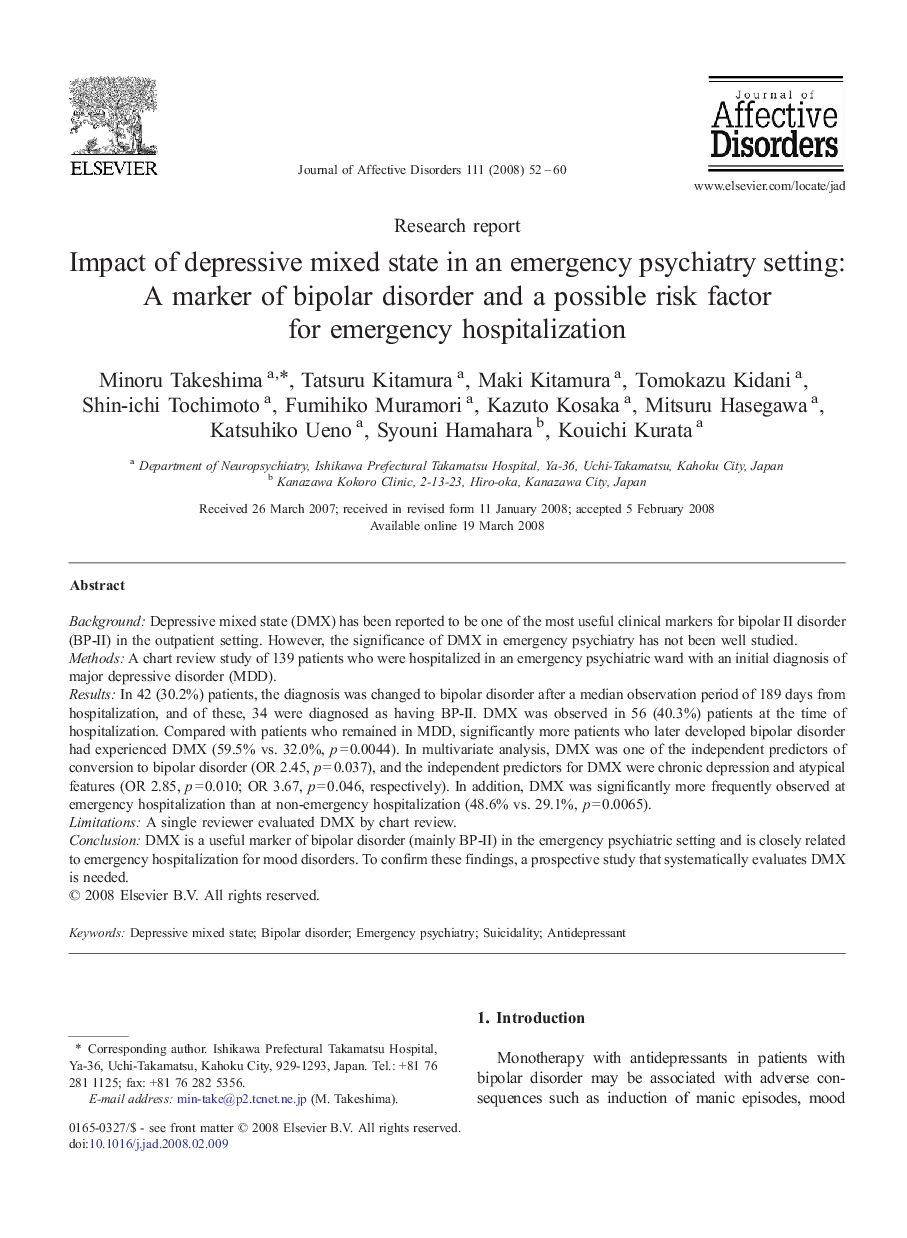| Article ID | Journal | Published Year | Pages | File Type |
|---|---|---|---|---|
| 4187224 | Journal of Affective Disorders | 2008 | 9 Pages |
BackgroundDepressive mixed state (DMX) has been reported to be one of the most useful clinical markers for bipolar II disorder (BP-II) in the outpatient setting. However, the significance of DMX in emergency psychiatry has not been well studied.MethodsA chart review study of 139 patients who were hospitalized in an emergency psychiatric ward with an initial diagnosis of major depressive disorder (MDD).ResultsIn 42 (30.2%) patients, the diagnosis was changed to bipolar disorder after a median observation period of 189 days from hospitalization, and of these, 34 were diagnosed as having BP-II. DMX was observed in 56 (40.3%) patients at the time of hospitalization. Compared with patients who remained in MDD, significantly more patients who later developed bipolar disorder had experienced DMX (59.5% vs. 32.0%, p = 0.0044). In multivariate analysis, DMX was one of the independent predictors of conversion to bipolar disorder (OR 2.45, p = 0.037), and the independent predictors for DMX were chronic depression and atypical features (OR 2.85, p = 0.010; OR 3.67, p = 0.046, respectively). In addition, DMX was significantly more frequently observed at emergency hospitalization than at non-emergency hospitalization (48.6% vs. 29.1%, p = 0.0065).LimitationsA single reviewer evaluated DMX by chart review.ConclusionDMX is a useful marker of bipolar disorder (mainly BP-II) in the emergency psychiatric setting and is closely related to emergency hospitalization for mood disorders. To confirm these findings, a prospective study that systematically evaluates DMX is needed.
